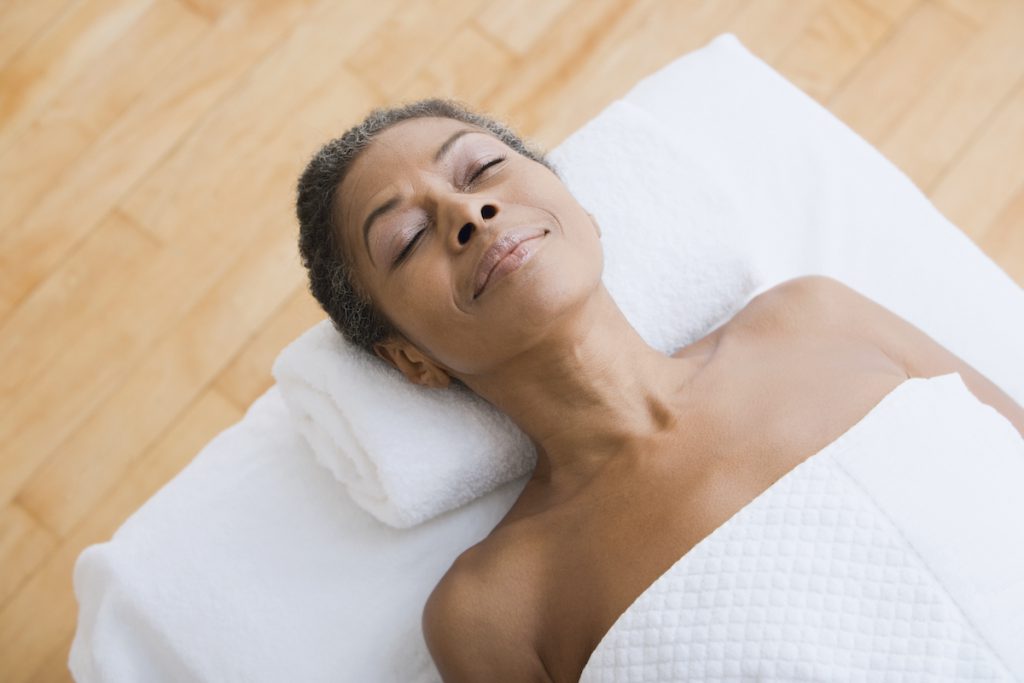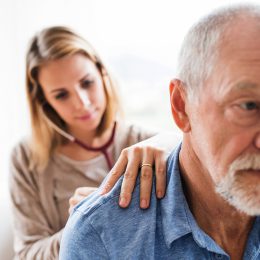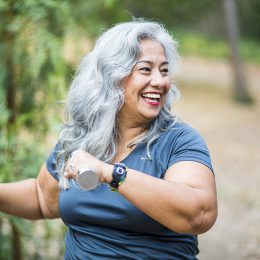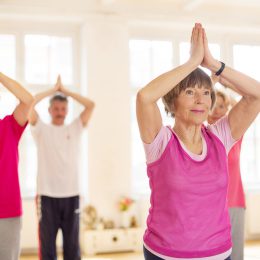9 Alternative Therapies That Are Actually Worth Trying
From acupuncture to health coaching to massage therapy, here’s how these treatments work—and how they might help you.

Not long ago, few people would have turned to an acupuncturist for pain relief or a reiki master for better sleep. But times have changed.
These days, nearly 40 percent of American adults use alternative medicine techniques to facilitate healing, according to the National Health Statistics Report.
There’s even a whole medical category—complementary and alternative medicine (CAM)—that encompasses a variety of treatments not standard in Western medical practice. In fact, a 2022 Systematic Reviews report found that 45 percent of health care providers currently prescribe CAM or incorporate it into their treatment plans for patients.
Far from being “new-agey nonsense,” many of these therapies may have a real role to play in human health. So before you dismiss them, it’s worth learning more about how they work—and how they might help you.
Here’s the lowdown on nine popular healing methods you might want to consider. Just be aware that many alternative treatments are not yet covered by insurance, so it’s smart to check with your health plan about coverage or discounts prior to making an appointment.
While you’re at it, go ahead and bring your doctors into the loop so they can weigh in on what may or may not be appropriate for you based on any conditions, injuries, or medications. By working with your medical providers to embrace the best of both mainstream and alternative therapies, you’ll maximize your opportunities for greater physical and emotional well-being.
Get and stay fit with SilverSneakers! Choose from dozens of different Community classes, visit a participating fitness location, or view the current schedule of SilverSneakers LIVE online classes.
Alternative Therapy #1: Massage Therapy
While massage therapy is still considered an alternative healing modality, it’s made its way into the mainstream. “Every person that has musculoskeletal pain would benefit from massage therapy,” says Mary O’Connor, M.D., cofounder and chief medical officer of Vori Health, a virtual holistic health provider that offers an integrated approach to musculoskeletal care.
Massage therapists manipulate muscles and other soft tissues by pressing or rubbing the tissues with the hands, fingers, or forearms. The goal is to relieve aches and pains, and inspire a sense of calm and well-being.
What science says: Research has found massage therapy may be helpful in relieving acute pain, managing chronic pain, improving emotional well-being, and reducing limitations due to physical or emotional issues. It may also improve quality of life for people coping with cancer, depression, or other major health issues.
Good news: This is one CAM therapy that you can adapt at home with self-massage to relieve aches and pains, or to help you sleep better.
Alternative Therapy #2: Acupuncture
This traditional Chinese medicine technique is best known for the procedure that involves penetrating skin with thin needles. In reality, acupuncture encompasses a variety of techniques, but they all aim to stimulate specific points on the body in order to tap into “energy flows” and promote mental and physiological healing, says Dave Teitler, a certified practitioner of traditional Chinese medicine and an acupuncturist at Carbondale Acupuncture Center.
Patients might seek out acupuncture for a wide range of issues, from back pain and arthritis to lack of energy and general aches and pains. Acupuncturists attempt to address these issues by placing fine-tipped needles underneath the skin on various acupuncture points, which are most commonly found on the arms, back, ears, legs, and neck. Most patients lie on a massage table while receiving treatment, Teitler says, and the needles don’t typically hurt.
What science says: Research suggests acupuncture may be helpful in treating chronic low back pain, speeding up recovery after an illness, enabling people with chronic illnesses to use less medication, and promoting better physical and mental health overall.
Alternative Therapy #3: Health Coaching
Working with a health coach fills a void that is often missing in mainstream health care. These trained experts work with patients to help set personal health goals and coach them through the steps it takes to achieve them.
A health coach can address a range of health issues, like:
- Managing a chronic health condition
- Weight loss
- Stress reduction
- Improving diet and exercise
- Quitting tobacco
- Adjusting to life after sudden health events, like a heart attack
“The traditional system is just not structured to recognize and start helping patients address health issues that in a large part are behavior-driven or behavior-influenced. That’s where having a coach really matters,” says Dr. O’Connor, of Vori Health. Health coaching is one part of Vori Health’s integrated approach to treating muscle and joint pain.
Positive psychology techniques play a big role in health coaching. Instead of focusing on what’s “wrong” with you (e.g., “You need to stop smoking”), a health coach would ask you to think about how your life might look if you kicked the tobacco habit. From there, they’d help you focus on your strengths to reach your end goal.
What science says: Research has shown that health coaching methods can be effective at helping people with different health risks and health issues make improvements.
A 2017 study in the American Journal of Lifestyle Medicine, for example, showed that health coaching helped participants achieve significant improvements in several risk factors for a variety of health conditions, including: blood pressure, cholesterol levels, weight, waist circumference, BMI, and more.
Also, one study published in Medical Care found that participants who received four weeks of health coaching (around issues such as weight loss) saw “significant” health care savings.
Alternative Therapy #4: Chiropractic
You probably know chiropractic treatments involve adjusting the alignment of the spine, but that’s actually just the tip of the iceberg.
“Spinal manipulative therapy is sort of our bread and butter, but it’s not all we do,” says Robert Hayden, D.C., founder of Iris City Chiropractic Center and a spokesperson for the American Chiropractic Association.
In fact, Hayden says there are more than 100 chiropractic techniques, which can be tailored to different health conditions and modified depending on the patient. For example, many chiropractors also utilize treatment modalities such as ultrasound, electrotherapies, or infrared sauna.
In all cases, the primary goals of chiropractic work are correcting alignment problems, alleviating pain, improving function, and supporting the body’s natural ability to heal itself.
What science says: Studies have found that chiropractic may be especially useful for treating back pain, neck pain, headaches, and other issues involving the musculoskeletal system. It may also be useful in managing osteoarthritis and fibromyalgia.
Alternative Therapy #5: Biofeedback
When you experience emotional or physical stress, your body shows signs: Your heart may beat faster, or you may start sweating, for example. Biofeedback helps you recognize these signs and take steps to relax—giving you some control over your body’s processes.
Biofeedback therapists train patients in a number of mental exercises and relaxation techniques with the goal of improving conditions such as chronic pain, headaches, or high blood pressure. Once trained, patients can practice these techniques virtually anywhere.
What science says: Existing research indicates that biofeedback can help control heart rate and breathing, and may help manage anxiety, urinary incontinence, and pain.
Alternative Therapy #6: Reflexology
Reflexology involves applying pressure to certain parts of the ears, feet, and hands with the use of a trained reflexologist’s hands, rubber balls, or other implements.
Subscribe to our newsletter
It's quick and easy. You could be one of the 13 million people who are eligible.
Already a member? Click to discover our 15,000+ participating locations.
Follow Us
As with acupuncture points, reflexology points are thought to correspond to certain bodily systems and organs. The theory goes that applying pressure to these areas can improve energy flow throughout the body and stimulate better function of the nervous system, thereby enhancing overall well-being.
What science says: While more research is needed, preliminary studies suggest reflexology may have a role to play in improving sleep quality, supporting physical balance, relieving pain and stress among cancer patients, easing anxiety and depression, and enhancing relaxation.
Alternative Therapy #7: Reiki
With Reiki, it’s all about energy. The therapy is based on the idea that everyone’s body is home to an unseen “life force energy.” Illness and stress signify low life force energy, while vitality and good health represent strong life force energy.
Reiki practitioners seek to help people with low life force energy by “transferring” life energy to the patient. This typically occurs by gently placing the hands on or near the body, but it is also thought to work from a distance.
If that sounds a little far out, here’s the Western take: Theories suggest reiki might alter a person’s electromagnetic field, which may account for changes in their physical or emotional state. Or perhaps reiki simply encourages relaxation, which can lower the stress response and improve immunity—thereby facilitating healing.
What science says: Research into the benefits of reiki is still emerging. So far, early evidence suggests reiki may be useful in managing pain, reducing anxiety and depression, and improving mood.
Alternative Therapy #8: Transcendental Meditation
Much like other forms of meditation, the goal of transcendental meditation (TM) is to “transcend” the ordinary thinking mind and rest in a state of “pure consciousness.” To that end, practitioners sit comfortably with their eyes closed and focus on a mantra for 20 minutes twice a day.
Unlike other forms of meditation, TM is a specific technique that’s taught by certified teachers over a series of sessions.
What science says: Studies suggest TM may offer a number of benefits, from assisting in the treatment of hypertension to improving heart health, reducing stress, boosting cognitive function, and even improving overall quality of life.
Alternative Therapy #9: Cupping
This ancient therapy has been used for at least 2,000 years in Asian and Middle Eastern countries. Recently it’s become popular in the West as a potential treatment for a range of health issues, from respiratory troubles to muscular pain.
In dry cupping, which is the most popular version, practitioners warm glass or silicone cups and then apply them to troubled areas on the patient’s body. The idea is that the suction helps promote circulation and blood flow to the area, thus facilitating healing.
What science says: While more research is needed, so far studies have found that cupping may help relieve joint pain, back and neck pain, arthritis symptoms, and other pain-related conditions.
Check Your SilverSneakers Eligibility Instantly
SilverSneakers members can go to thousands of gyms and fitness locations across the nation, plus take SilverSneakers LIVE online classes that are designed for seniors of all levels. If you have a Medicare plan, it may include SilverSneakers—at no additional cost. Check your eligibility instantly here.
Not eligible for SilverSneakers? You can still get 200+ free SilverSneakers On-Demand videos and stay in touch with us by creating your online account.





